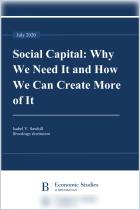Rejoignez getAbstract pour lire le résumé !

Rejoignez getAbstract pour lire le résumé !
Eric Klinenberg
Palaces for the People
How Social Infrastructure Can Help Fight Inequality, Polarization, and the Decline of Civic Life
Crown, 2019
Aperçu
Societies need a vibrant “social infrastructure” – the public spaces that bring people together.
Recommendation
Contending with crises such as climate change requires collaboration and shared purpose, but today’s society is fragmented. Professor Eric Klinenberg recommends a solution based on “social infrastructure” – shared public spaces such as libraries, parks, and coffee shops. His examples include a Houston church that became a hurricane shelter and formerly dangerous vacant lots that Chicagoans transformed into urban farms. Klinenberg believes such places and organizations provide the “social glue” that holds communities together. His entertaining, optimistic study summarizes the condition of the world’s social infrastructure and describes innovative ways to improve, expand, and maintain it.
Summary
About the Author
Eric Klinenberg is Helen Gould Shepard Professor in the Social Sciences and director of the Institute for Public Knowledge at New York University. He is also the research director for Rebuild by Design.





















Comment on this summary